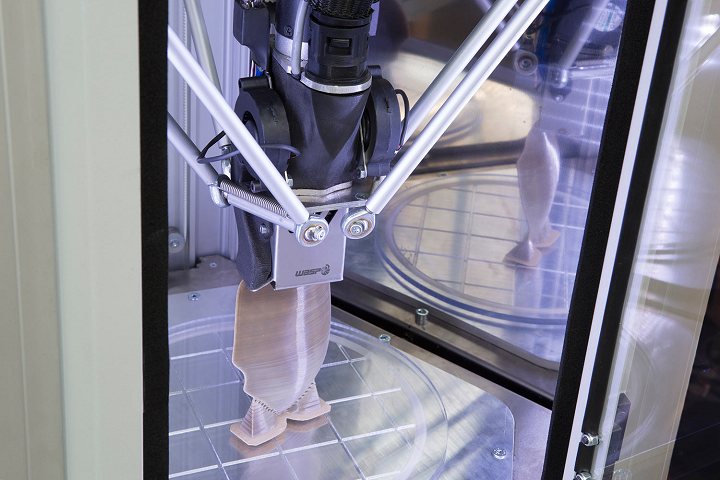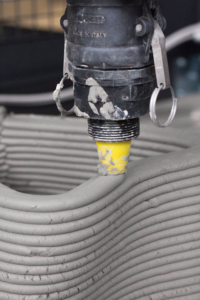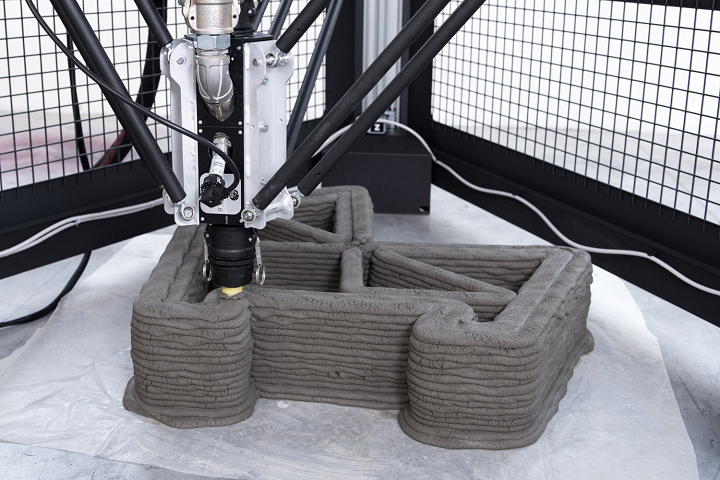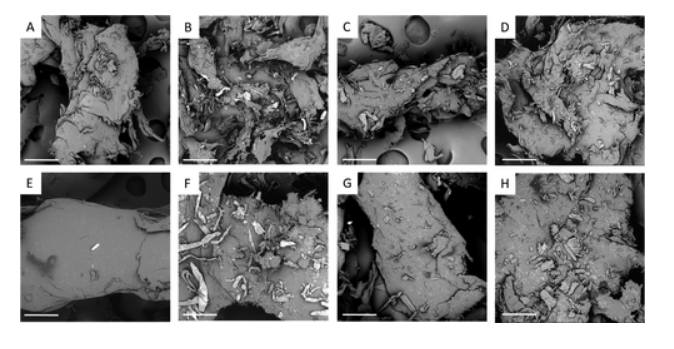Italian company WASP (World’s Advanced Saving Project) always manages to surprise me with the multitude of unique 3D printers it develops. At last year’s formnext event, the company introduced its Industrial 4.0 line, and this year, at formnext 2019, WASP will once again amaze visitors to the huge trade fair with something new: the Delta WASP 2040 TECH, which can print PEEK pellets.
 PEEK, or polyetheretherketone, is notoriously difficult to print with, and requires a nozzle temperature of at least 380°C to properly extrude the high-strength thermoplastic. But WASP has never been one to back away from a challenge, as it’s always on the lookout for new ways to approach additive manufacturing. In fact, the company introduced its first pellet 3D printer three years ago, but it certainly wasn’t capable of working with PEEK, which it refers to as a ‘super polymer.’
PEEK, or polyetheretherketone, is notoriously difficult to print with, and requires a nozzle temperature of at least 380°C to properly extrude the high-strength thermoplastic. But WASP has never been one to back away from a challenge, as it’s always on the lookout for new ways to approach additive manufacturing. In fact, the company introduced its first pellet 3D printer three years ago, but it certainly wasn’t capable of working with PEEK, which it refers to as a ‘super polymer.’
“Peek pellet printing is undoubtedly a revolutionary application and the impact of this innovation on the entire WASP-printers-line is extraordinary,” the company stated in a press release.
The Delta WASP 2040 TECH 3D printer is the first of a new line that comes with a high-precision HD extruder for pellets. The company says it’s a novel machine because of the fully insulated, stainless steel, high-temperature chamber that makes it possible to print PEEK pellets.
“Healthcare has always been a huge branch of the applications for additive manufacturing since its beginning. This sector is showing us how tangibly 3D printing can improve our lives but also challenging every new technology and inspiring innovation,” WASP’s Giulio Buscaroli wrote on the WASP website.
“In this context, WASP is proud to unveil the results of its work on printing medical-grade PEEK from pellets with a brand new line of 3D printers: Delta WASP Tech line.”
The company has been busy researching in the medical field, and the new Delta WASP 2040 TECH is the culmination of all this hard work. The purpose of this pellet 3D printer is to fabricate implantable prostheses, in certified PEEK, at a more affordable cost. Neurosurgeon Dr. Villiam Dallolio has been helping WASP to develop the process, and the Delta WASP 2040 TECH will be showcased next week at formnext.
But that isn’t the only new system WASP is bringing to the trade fair in Frankfurt. The company has been gaining experience in the architectural field as well as the medical, and will be showcasing its Delta WASP 3MT CONCRETE 3D printer – another novelty, which is capable of 3D printing large, fluid, dense materials. The company wrote that the new 3D printer “optimized the previous LDM system with a certified one,” which makes it possible to print materials like concrete through a continuous feeding method.
Finally, WASP will also be presenting its new Delta WASP 3MT INDUSTRIAL 4.0 3D printer at formnext. The printer features a continuous feeding system and optimized extruder so that it can print 100% recycled pellet polymers.
“It’s a solution for increasingly advanced medical applications but not only: WASP has identified in the pellet printing the answer to the increasingly essential needs of recycling plastic materials and also to the need of producing furniture tailored pieces,” the company wrote.
To see these three new 3D printers for yourself, you can visit WASP at formnext, November 19-22, at Stand B79 in Hall 11.0.
[Images provided by WASP]
Discuss this story and other 3D printing topics at 3DPrintBoard.com or share your thoughts in the Facebook comments below.
The post WASP Bringing PEEK Pellet 3D Printer, and Others, to formnext 2019 appeared first on 3DPrint.com | The Voice of 3D Printing / Additive Manufacturing.






